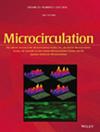Observational Study of Sublingual Microcirculation in Patients With Chronic Cardiovascular Disease
Abstract
Background
Sublingual video microscopy is increasingly used to study the microcirculation in acute illness. However, the sublingual microcirculation in patients with chronic cardiovascular diseases (CVD) is understudied. Our objective was to quantify sublingual microcirculatory parameters in a large cohort of patients with CVD.
Methods
One hundred and thirteen patients with CVD were enrolled. Incident dark-field handheld video microscopy (IDF-HVM) was used to quantify microvascular flow index (MFI), microvascular heterogeneity index (MHI), proportion of perfused vessels (PPV), perfused vessel density (PVD), and total vessel density (TVD). Data were stratified by age quartiles (20–39, 40–59, 60–79, 80+), cardiovascular comorbidities (hypertension, diabetes, chronic kidney disease, coronary artery disease, heart failure), and systemic hemodynamics (mean arterial pressure and pulse pressure).
Results
In our 113 patient cohort, overall MFI = 2.86 ± 0.20; MHI = 0.15 ± 0.20; PPV = 94.3% ± 4.9%; PVD = 23.1 ± 4.7 mm/mm2; and TVD = 24.5 ± 4.8 mm/mm2. Diabetic patients had lower mean MHI (0.10 vs. 0.17; p = 0.046) compared to those without diabetes. There was no difference in sublingual parameters attributable to other CVDs, age, or hemodynamics.
Conclusion
In patients with stable cardiovascular disease, sublingual microvascular parameters are similar across age, blood pressure, and comorbidity cohorts, with the exception of decreased MHI in diabetic patients.


 求助内容:
求助内容: 应助结果提醒方式:
应助结果提醒方式:


